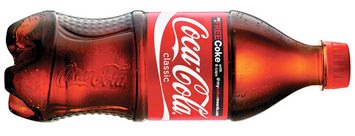As motion picture production continues to transition from film to video, we become increasingly aware of the differences between the two formats. As much as video camera manufacturers work to improve the quality of video recording technologies, there will always be inherent differences between recording on the chemically-based film medium and the electronic-based video medium.
A term often heard when discussing video-based production is “the film look.” As with much industry-specific terminology, there is some confusion about what this term really means. There are numerous articles on the Internet and print publications that attempt to explain the film look; however, they all tend to say something a little different.
To attempt to help alleviate some of the confusion, DMS presents the following overview of some of the main considerations when attempting to define - and obtain - the film look.
Grain. Most film is comprised of a clear cellulose triacetate base with three color-sensitive layers of gelatin containing silver halide crystals. It’s these silver crystals that, upon exposure to light, turn dark and define the negative picture image. Each film frame has a unique grain structure and, when projected in rapid succession, demonstrates what many describe as an organic look, even when viewing a shot with no camera movement or movement of the subject within the frame (sort of like a Bill Plympton cartoon). Video frames are made up of a fixed number of pixels each in a fixed location on the camera sensor or display screen and hence do not demonstrate this organic look. A video editor can add artificial grain to video image during post-production to attempt to get a film look.
Shallow depth of field. Several factors contribute to how shallow or deep a camera system’s depth of field is but, in general, a 35mm film camera can obtain a much shallower DOF than most video cameras when shooting under the same lighting conditions. Cinematographers use a shallow DOF to selectively focus on what they feel the audience’s eyes should be drawn to. Video camera operators attempt to mimic the film look by obtaining a shallow depth using special lens attachments and careful manipulation of iris and zoom settings.
Frame rate. Motion pictures are usually shot with film cameras running at 24 frames per second. Video production is generally shot at 30 or even 60 frames per second. While a faster frame rate might imply a smoother or more accurate image, there are definite differences in the look of an image being displayed at 24 fps vs. 30 or 60 fps. Video camera manufacturers have figured out clever ways to allow their products to record at 24 fps to mimic the look of film cameras.
Scanning mode. Film-based productions are recorded and projected one full frame at a time. Video productions are recorded and displayed using a system that renders frames by scanning the individual horizontal lines of pixels from top to bottom in rapid succession until a full frame has been displayed. This can be done in an interlaced manner where all the odd-numbered lines are rendered first before going back to render the even-numbered lines. This method creates certain motion artifacts that give video its own look. An alternative method of scanning lines from the first to the last in a single pass - called progressive scanning - was developed to give video a look closer to that of film.
Production style. Beyond all the technical aspects of obtaining the film look, the most profound technique, in my opinion, of making video look like film is in the production style. Big-budget films generally offer much higher production value in the images captured by using advanced lighting techniques, specialized camera moves using dollies, cranes and Steadicams and more stylized production techniques using alternative camera angles, color pallets, set and costume design. etc.
So if you really want to get “the film look” on your next video production, seek out a production company that can offer guidance with not only the specific technology used in obtaining the look of motion pictures but also the advanced production techniques used to create scenes like the big boys do.














